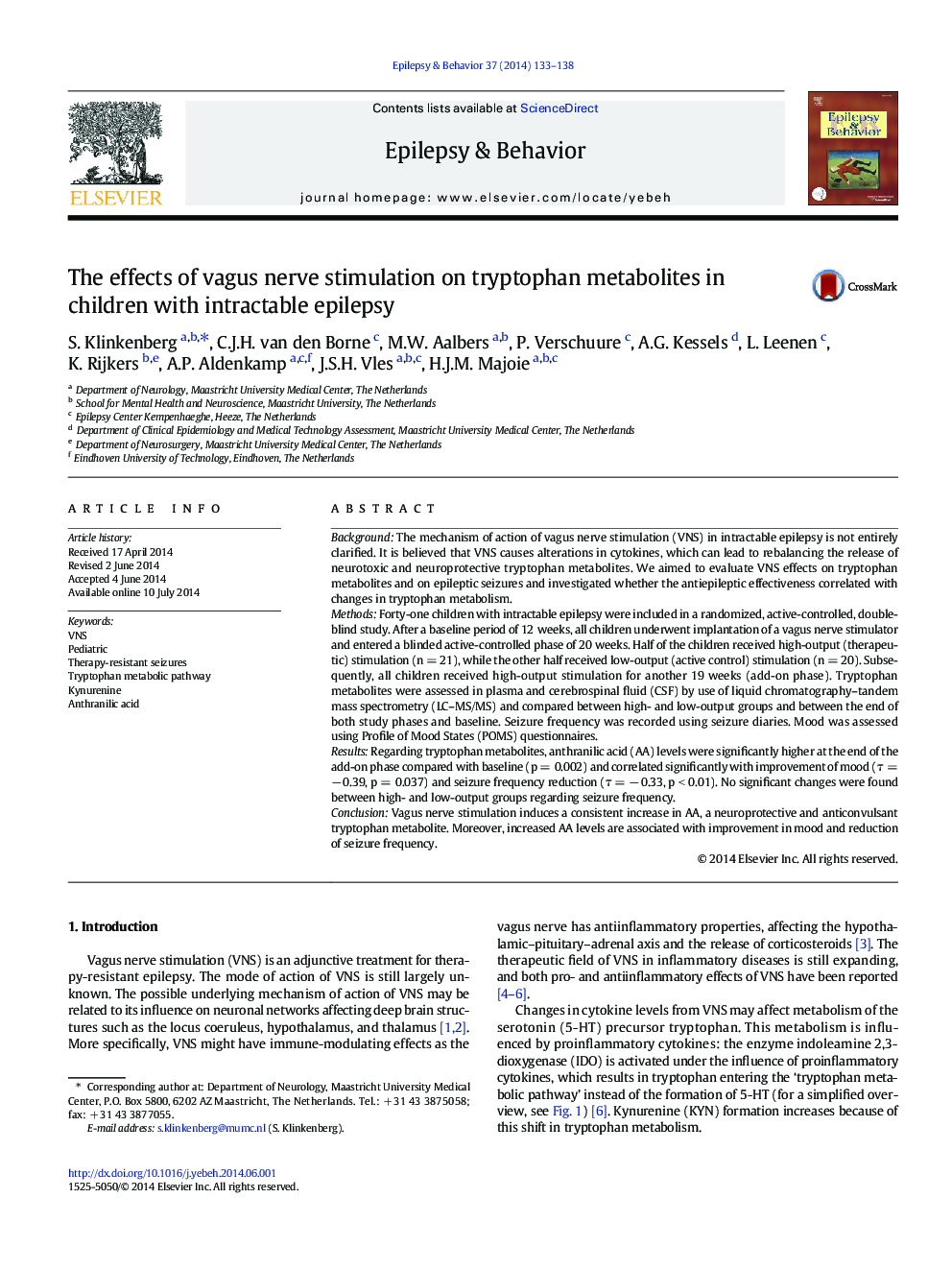| کد مقاله | کد نشریه | سال انتشار | مقاله انگلیسی | نسخه تمام متن |
|---|---|---|---|---|
| 6012196 | 1579852 | 2014 | 6 صفحه PDF | دانلود رایگان |
- The first RCT concerning effects of vagus nerve stimulation in children with intractable epilepsy on tryptophan metabolites
- VNS induces a consistent increase in anthranilic acid (AA).
- Increased AA levels are associated with improvement in mood.
- Increased AA levels are associated with a reduction of seizure frequency.
BackgroundThe mechanism of action of vagus nerve stimulation (VNS) in intractable epilepsy is not entirely clarified. It is believed that VNS causes alterations in cytokines, which can lead to rebalancing the release of neurotoxic and neuroprotective tryptophan metabolites. We aimed to evaluate VNS effects on tryptophan metabolites and on epileptic seizures and investigated whether the antiepileptic effectiveness correlated with changes in tryptophan metabolism.MethodsForty-one children with intractable epilepsy were included in a randomized, active-controlled, double-blind study. After a baseline period of 12 weeks, all children underwent implantation of a vagus nerve stimulator and entered a blinded active-controlled phase of 20 weeks. Half of the children received high-output (therapeutic) stimulation (n = 21), while the other half received low-output (active control) stimulation (n = 20). Subsequently, all children received high-output stimulation for another 19 weeks (add-on phase). Tryptophan metabolites were assessed in plasma and cerebrospinal fluid (CSF) by use of liquid chromatography-tandem mass spectrometry (LC-MS/MS) and compared between high- and low-output groups and between the end of both study phases and baseline. Seizure frequency was recorded using seizure diaries. Mood was assessed using Profile of Mood States (POMS) questionnaires.ResultsRegarding tryptophan metabolites, anthranilic acid (AA) levels were significantly higher at the end of the add-on phase compared with baseline (p = 0.002) and correlated significantly with improvement of mood (Ï = â 0.39, p = 0.037) and seizure frequency reduction (Ï = â 0.33, p < 0.01). No significant changes were found between high- and low-output groups regarding seizure frequency.ConclusionVagus nerve stimulation induces a consistent increase in AA, a neuroprotective and anticonvulsant tryptophan metabolite. Moreover, increased AA levels are associated with improvement in mood and reduction of seizure frequency.
Journal: Epilepsy & Behavior - Volume 37, August 2014, Pages 133-138
